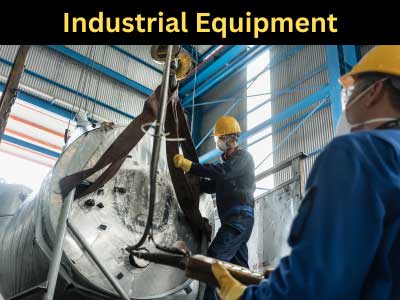Key Takeaway
The key difference between equipment leasing and rental lies in the duration and purpose of use. Leasing is typically for longer terms, often several years, and is ideal when you need equipment for a significant period. It often includes options to purchase the equipment at the end of the lease.
On the other hand, renting is more short-term, perfect for when you need equipment for a specific project or a brief time. Renting usually has no long-term commitment, making it flexible but often more expensive on a per-day basis compared to leasing. Deciding between leasing and renting depends on your business needs, duration, and financial strategy.
Definition of Leasing vs. Rental
When deciding how to acquire equipment for business operations, two primary options often arise: leasing and renting. While both options involve paying to use equipment without outright purchasing it, they differ significantly in terms of duration, cost, and flexibility.
Leasing generally refers to longer-term agreements, usually spanning years. In a lease agreement, businesses commit to making regular payments over a fixed period and often have the option to purchase the equipment at the end of the lease. Leasing is ideal for businesses that require equipment for extended periods but may not have the upfront capital to buy the machinery outright.
On the other hand, renting is typically for short-term needs. Businesses pay for equipment usage on a daily, weekly, or monthly basis. Renting offers flexibility for temporary or seasonal projects, allowing businesses to return the equipment once the need has been fulfilled. Understanding these definitions helps businesses choose the best option based on their needs.

Key Differences in Contract Terms
The contract terms for leasing and renting vary significantly. A lease typically involves a commitment to a fixed period, often two to five years, and the lessee is responsible for the care and maintenance of the equipment during this time. Leases also include conditions regarding early termination, which can result in penalties or fees if the contract is broken prematurely.
In contrast, rental agreements are more flexible, with shorter contract terms, often on a month-to-month basis. This flexibility allows businesses to return the equipment without incurring long-term costs. Rentals usually come with maintenance included, so the renter has minimal responsibility for repairs and upkeep. This feature makes renting a favorable option for businesses that need equipment for shorter periods or want the flexibility to switch machinery based on their current projects.
Financial Implications of Leasing vs. Renting
The financial structure of leasing and renting differs in terms of costs, ownership, and tax benefits. Leasing typically involves lower monthly payments compared to renting, especially over a long period. However, leases lock businesses into a long-term commitment, which may not be ideal if equipment needs change frequently.
Leasing offers potential tax advantages as lease payments can often be deducted as business expenses. Additionally, if a company opts to purchase the equipment at the end of the lease term, it can eventually own the asset without paying the full upfront cost.
On the other hand, renting is more expensive per month but avoids the long-term commitment of a lease. Rentals are also 100% deductible as operational expenses, but since there’s no ownership option, businesses do not build equity in the equipment they rent. Ultimately, businesses need to evaluate their financial strategies and long-term needs when deciding between leasing and renting.
Equipment Ownership and Usage Rights
One key difference between leasing and renting is ownership. Leasing contracts generally give businesses the option to purchase the equipment at the end of the term, potentially allowing the lessee to take full ownership. During the lease, the lessee enjoys exclusive usage rights, and while they don’t own the equipment, they may treat it as if they do—responsible for maintenance, repair, and sometimes even insurance.
Renting, on the other hand, does not offer an ownership option. The rental company retains full ownership, and the renter is merely paying for the right to use the equipment for a short period. As a result, the rental company typically handles maintenance and repairs, providing an easy, hands-off approach for businesses that need equipment temporarily. This aspect makes renting more appealing for businesses that prefer not to deal with equipment maintenance or long-term ownership responsibilities.
Which Option is Best for Your Business?
Choosing between leasing and renting depends on the specific needs of your business. If your business requires equipment for an extended period and you prefer lower monthly payments with the option to own the equipment eventually, leasing is likely the better choice. Leasing is ideal for businesses that plan to use the equipment for years and want the option to purchase it at the end of the contract.
However, if your business only needs equipment for a short period or wants flexibility without a long-term commitment, renting may be the more attractive option. Renting is especially beneficial for projects that have temporary equipment needs or for businesses that want to avoid maintenance responsibilities. By choosing rental agreements, companies can stay agile and adjust their equipment based on project demands.
Ultimately, the decision should be based on your company’s operational needs, budget, and the flexibility you require.
Conclusion
Leasing and renting both offer advantages depending on the specific requirements of a business. Leasing provides a more long-term solution, lower monthly payments, and the potential for eventual ownership, making it a good option for businesses with ongoing equipment needs. Renting, on the other hand, is more flexible and maintenance-free, catering to short-term or project-specific demands.
Businesses must evaluate their needs, financial strategies, and operational timelines before making a decision. Whether opting for leasing or renting, it’s essential to weigh the pros and cons to ensure that your company remains financially efficient and adaptable to changing needs.
